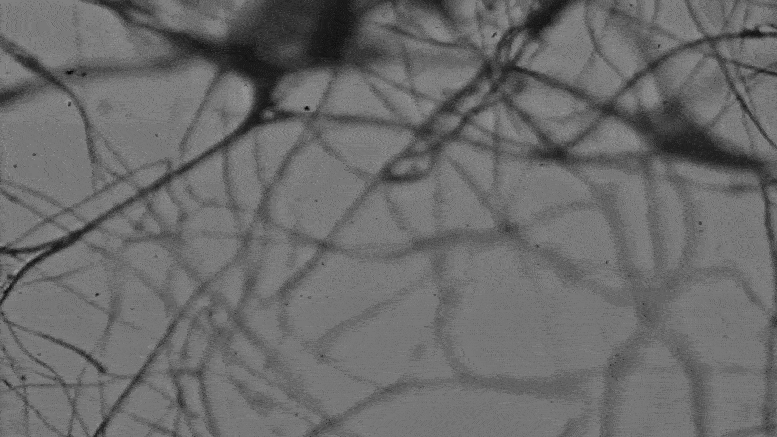Nanofiber Face Masks Improve Efficiency, Need Replacing More Often
0 View
Share this Video
- Publish Date:
- 7 September, 2021
- Category:
- Covid
- Video License
- Standard License
- Imported From:
- Youtube
Tags

Polyacrylonitrile nanofiber mesh before (left), during (middle) and after (right) the capture of water aerosols. The mesh becomes coarser because some nanofibers stick together after the collected water droplets have completely evaporated. Credit: Southern University of Science and Technology, Shenzhen, China
Videos capture the behavior of nanofibers under exposure to water aerosol.
Since the outbreak, the COVID-19 virus has infected more than 220.9 million people worldwide and claimed more than 4.5 million lives, according to the World Health Organization’s coronavirus dashboard on September 7, 2021.
However, many medical professionals attribute the resulting role of face masks in slowing the spread of the virus and protecting human health.
Innovations to improve the effectiveness of masks, with an increasing focus on nanofiber production, have resulted in higher filtration efficiency, greater comfort and easier breathing. However, the effects of microwater droplets on nanofiber integrity are relatively unclear.
In Physics of Fluids, by AIP Publishing, researchers from the Southern University of Science and Technology in Shenzhen, China, explore these ambiguities through a visualization of nanofibers interacting with water aerosol exposure.
The video shows the polyacrylonitrile (PAN) nanofiber mesh that traps water aerosols. The mesh becomes coarser because some nanofibers stick together after the collected water droplets have completely evaporated. Credit: Southern University of Science and Technology, Shenzhen, China
“When COVID-19 first hit, face masks were extremely scarce everywhere and people were coming up with all sorts of ways to ‘rejuvenate’ used face masks. It was like a chef’s competition, involving cooking, steaming, grilling and even smoking,” said co-author Boyang Yu. “Our intuition told us that this is not right. We need to investigate and see what exactly happened to the nanofibers.”
Yu and his colleagues used high-speed microscopic videos to systematically visualize the evolution of nanofibers made from polymers of different contact angles, diameters and mesh sizes under exposure to water aerosol.
“Filming nanofibers is like taking portraits of babies,” Yu says. “They don’t like to stay in place in front of the camera. This is because nanofibers are very soft and thin, especially if the aerosol stream blows through them. But with enough care, patience and luck, we finally managed to get some nice pictures for our analysis.”
The images produced show that nanofibers fuse irreversibly during the “droplet capture” phase and the subsequent liquid evaporation phase, significantly reducing the effective fiber length for aerosol trapping. They show that hydrophobic and orthogonally woven fibers can reduce capillary forces and decrease the fiber coalescence rate.
“We have confirmed three things,” said co-author Weiwei Deng. “Firstly, nanofibers are excellent at capturing droplets in aerosol. Second, the nanofibers are bonded together after the aerosol has been collected. And three, this bond is tight and irreversible even after the collected droplets have evaporated.
“Wet fibers tend to cling together in the same way that wet hairs tend to bunch together. It’s because of the capillary force, which becomes dominant as the shell gets smaller, and it’s extremely strong for nanofibers.”
The findings of the study are expected to help improve the design, manufacture and use of face masks made with nanofibers. They provide instant visual evidence of the need to change face masks frequently, especially in cold environments.
“Winter is coming,” Deng said. “When it’s cold outside, your breath contains more droplets, which can cause the nanofiber mesh to collapse faster.”
Reference: “Visualization of the Interaction of Water Aerosol and Nanofiber Mesh” By Boyang Yu, Jian Chen, Daner Chen, Rouxi Chen, Yuenan Wang, Xiujuan Tang, Hsing-Lin Wang, Lian-Ping Wang, and Weiwei Deng, September 7, 2021, Physics of liquids.
DOI: 10.1063/5.0061847










